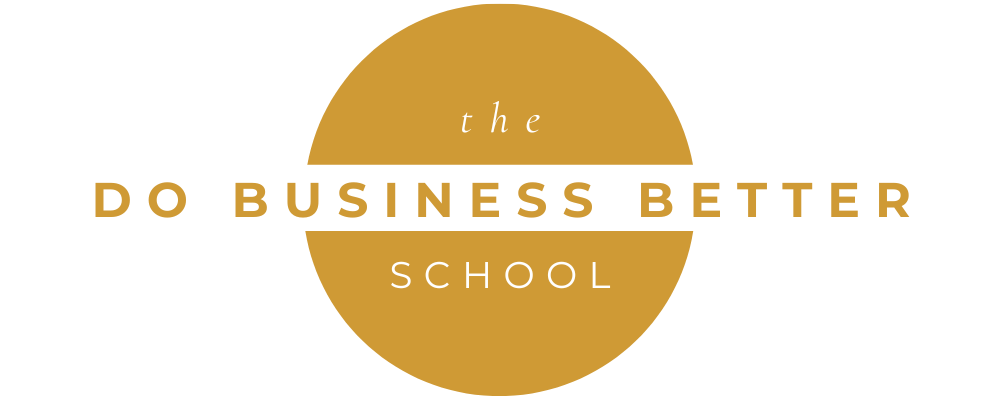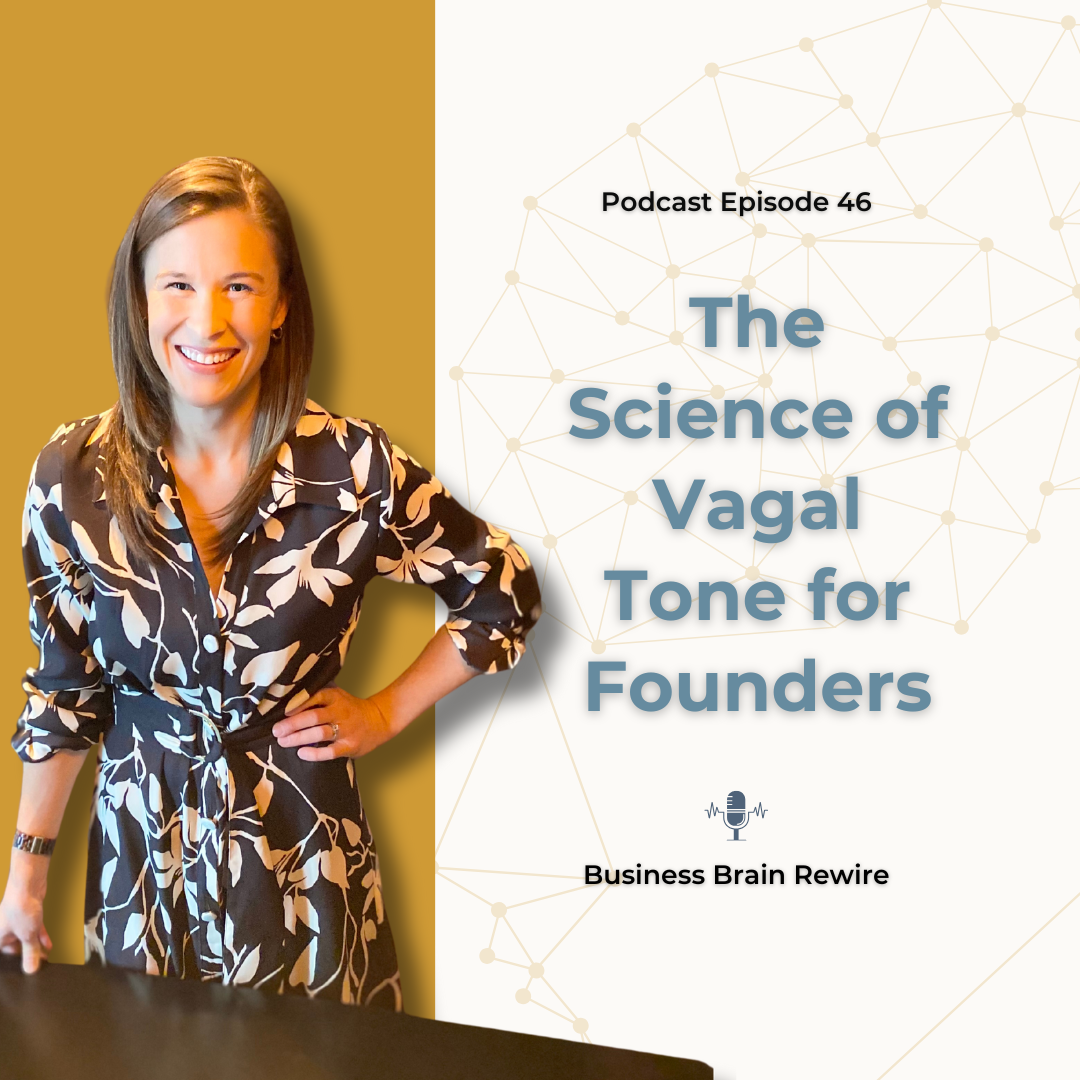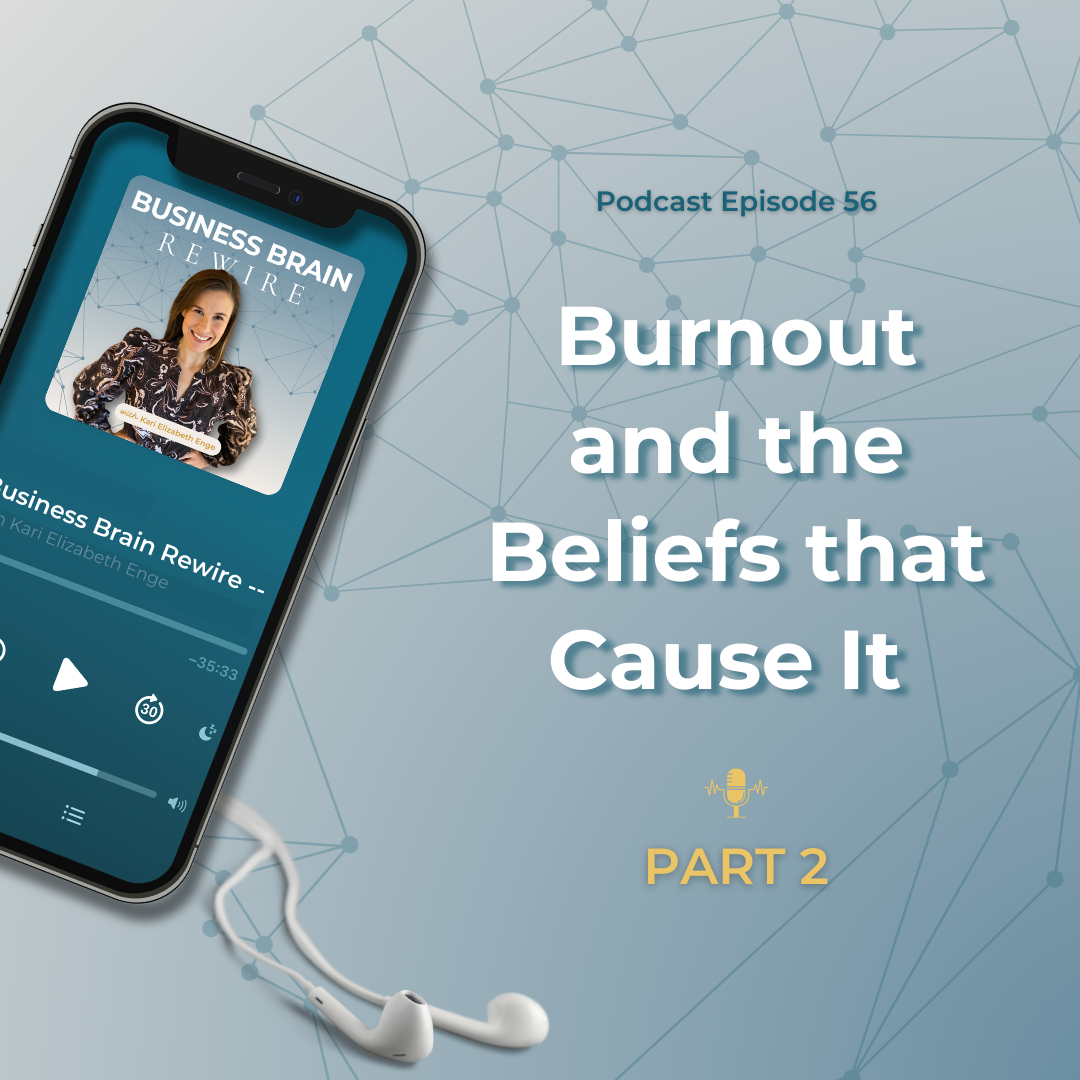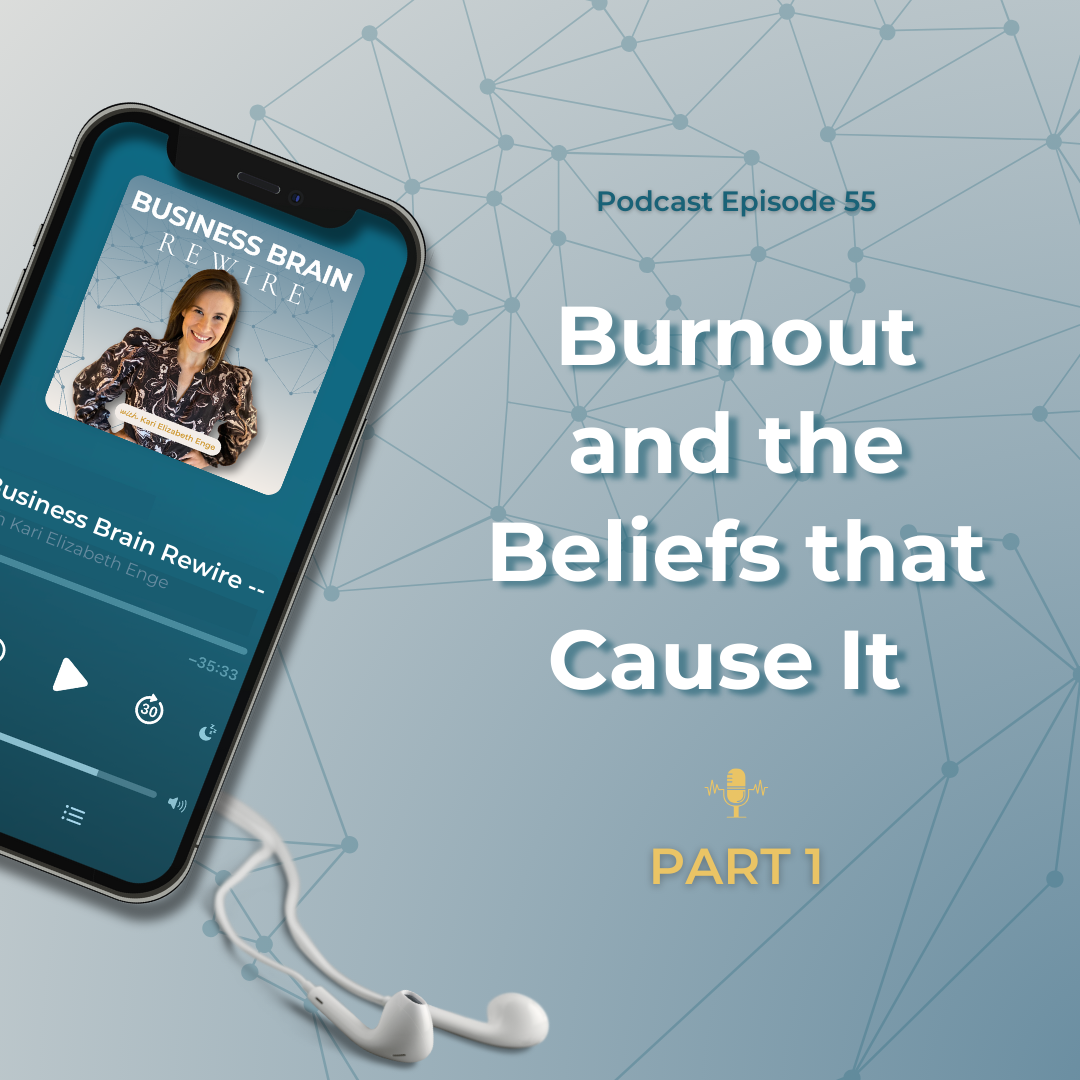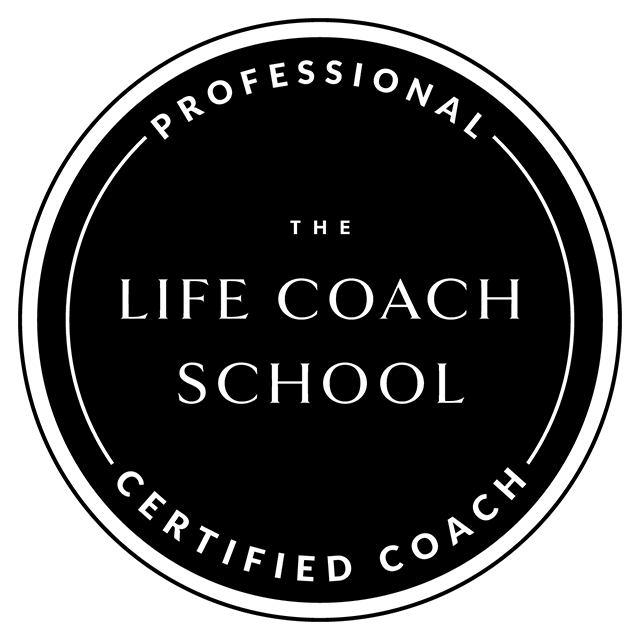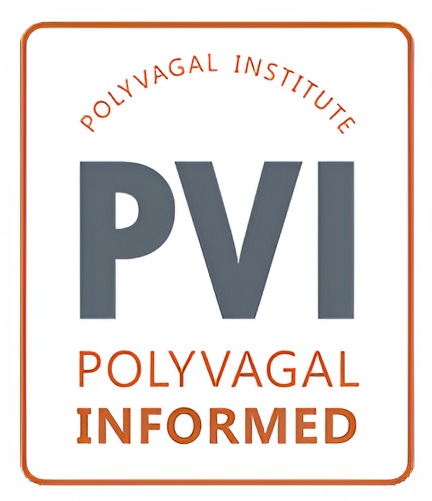What do Olympic athletes, Navy SEALs, and the world’s most resilient founders have in common?
They’ve trained their nervous systems for peak performance—and it’s not what you think.
In this week’s episode, I’m sharing a live recording from a local class I taught at Aker HQ in Fornebu, Norway, as part of their Takeoff Tuesday series. The room was filled with ambitious startup founders and high-performing professionals… and the energy was electric.
We went beyond productivity tips and surface-level hacks to explore a critical but often overlooked advantage: how your nervous system affects your ability to think strategically, stay in flow, and make better decisions under pressure.
This isn’t about a good morning routine. It’s about understanding the real science behind how your brain and body work—and learning how to use it to your advantage throughout the day in small ways.
In this episode, you’ll learn:
- Why the old model of “just take action” actually limits your performance
- The surprising root cause behind procrastination, burnout, and self-sabotage
- How elite performers build vagal tone—and how founders can do the same
- A simple 3-step process to shift your state in 90 seconds or less
- Why staying in the “Goldilocks zone” is the key to sustainable growth
Whether you’re a startup or chasing your next big business goal—you’ll walk away with science-backed tools to work smarter with your nervous system, not against it.
Mentioned in Today’s Episode:
If this episode had you nodding along, thinking yes, this is exactly what I need—then don’t stop here. Let’s take these strategies and turn them into action with a step-by-step framework. Proven science-backed tools. A clear path to growing with more impact AND ease.
Go to dobusinessbetterschool.com/class and I’ll see you at my next LIVE training.
Transcript:
[00:01:15] I’m sharing a live recording of a class that I recently taught at AKER headquarters here in Norway. This event was part of their Takeoff Tuesday series that I was invited to speak at, and it brought together a room full of brilliant founders, tech leaders, and purpose-driven professionals and the topic was around something. I believe every single founder needs to understand, if they want to perform at their best without burning out, with joy and ease and that of flow that I know you want while making a positive impact in the world.
[00:01:52] What is that topic? We’re talking about vagal tone today. Don’t worry, it’s not complicated, but your vagus nerve does affect how your nervous system operates and how your brain does too. It literally shapes every decision, your energy, your growth. All of it. In this talk I break down why traditional hustle mindset is really outdated and old school, and how elite performers like Olympic athletes and Navy seals train their brains and bodies differently. Now just a heads up, you might hear a little bit of background noise because this was recorded live and I’m including a q and a section at the end that I think was just really valuable, even though you can barely hear the person asking the question. But I just wanted you to get all of the goodness here. So please excuse the quality. I hope you’ll enjoy diving in with me to vagal tone for founders. Let’s get to it.
[00:02:56] /Hello, I am so excited to take the next couple of minutes this morning to set the stage and to give you some really leading edge science that I consider fundamental founder education. If you listen closely and you really take what I say to heart, I promise it will change the way you approach, not just your business, but your personal life as well.
[00:03:27] Everybody in this room, if you showed up today, it’s because you have big goals. You’re a driven person. And you’re probably a lot like me. You wanna grow a company. You wanna make a big impact. And along the way, you know that, in order to do that well, you have to constantly be expanding yourself and your capacity as a CEO.
[00:03:51] You also wanna feel good, right? You want joy, fulfillment, purpose. Purpose is probably the reason why you’re doing what you do. And we’ve got other stuff going on, right? We have relationships, we have kids. I have two sick toddlers at home today, and we probably wanna prioritize our health and our wellbeing. My first question to you is this, what is the process for reaching your goals? Not just one at a time, but all of them simultaneously. Entrepreneurial culture in the business world teaches us that this is a very linear process, and they say it goes a bit something like this. You set a goal, you make a strategy. Then you go out and you take action on it and you test and you tweak several times. Maybe you’re trying to follow the lean start at methodology. Ultimately you find the winning formula for that goal and you reach success. Society is teaching us from when we’re really, really young that the fuel for this process is two things. Action taking and finding the right answer. Because this process is stressful, society says, get a good morning routine. Make sure you sprinkle in some self-care ’cause we don’t want you to burn out. Have you heard that? But this is not how it works. This is a misuse of the lean startup methodology and approaching your life and your business in this way, it actually starts a chain reaction in your biology, in your brain, in your body that makes it harder to reach your goals. It’s a really old school approach.
[00:05:34] Because of what we now know in neuroscience, this approach, it lowers your cognitive function and it also lowers the quality of your outputs. When you are in this model, you’ll find yourself oscillating between two different approaches, sometimes within one day. So you’ll either be hustling or hesitating. Hustling is when you’re trying to get stuff done. You’re trying to do more. You’re using willpower. And when you’re using this type of energy, you tend to add stuff. You get busy. When you’re hesitating, this is when you’re thinking you’re looking for answers, and it can cause procrastination and self care as its main fuel. But the answer is not for the hustlers to slow a bit down and use more self care, and the answer is not for the hesitations to just get to it already and get out of their comfort zone, because these are two opposite ends of a broken model. And there’s some common coping strategies that we see happen, when you’re stuck in these approaches.
[00:06:44] First of all, you’re gonna be trying. Trying hard to get more done or trying to stop procrastinating. You’re gonna be doing something that I like to call energy management, which is where you press the gas and you really push to get something done, and then when you start to get tired, you have to let off and slow down. You might turn to hacks, mindset hacks. Maybe I just need to believe more. Maybe I just need to trust more. People are talking about this manifest your dreams thing. Or you’ll turn to bio hacks. Maybe I’m just missing a good exercise in and morning routine. You might start looking to the outside for answers, looking for that next solution that’s gonna solve all your problems. Or if all else fails, you think, maybe I was just too ambitious. Maybe I just need to start sacrificing one for the other. Business for personal. Personal for business. Okay.
[00:07:38] But all this hustling, all this hesitating, this linear approach where we use action taking and finding answers as the fuel, it’s actually caused by one root cause, one root problem. That is nervous system dysregulation. And this piece of neuroscience about how our nervous system really works, it’s actually the key for reaching your goals all at the same time with more impact and ease. It allows you to drop this old school approach and find a third better way. And what’s really exciting is that the professional athlete world, the military are Navy Seals, high capacity individuals are already using these tools, and I think it’s about time that founders and CEOs get on board.
[00:08:26] So that’s what we’re gonna talk about for the next couple of minutes. I’m gonna take you a little bit deeper than you’re probably expecting. I’m gonna go past some of the tips and tricks and hacks ’cause I know you heard it and instead, we’re gonna spend just a little bit of time looking at how your brain and body actually work. Because once you understand that, everything starts to click. Okay. Are you ready? You have three parts of your brain for you to remember every day at as you’re sitting at the desk.
[00:08:58] The first part is your executive center. It is made up of your prefrontal lobes. This is where you do all your higher executive functioning from. So it’s where you do math. It’s where you problem solve. It’s where you make a business strategy. You can think of it like your human computer. When it’s working well, it’s very curious. It’s very objective. And it’s really good at finding and connecting the dots automatically by itself.
[00:09:29] More interior to that, you have your limbic system and you have what we call the emotional center. And this is where you process all your emotions and it’s what motivates you. So even if you don’t think you are an emotionally driven person, the only reason why a human does anything is because of how you’re feeling in the moment or how you think you’re gonna feel once you take the action. Okay, so this motivator, it drives pretty much everything, right? And it’s caught talking to the executive center, giving it information to help it make decisions, and to help it move forward. So we are not like chat GBT, right? We have this emotional intelligence and that’s a really good thing.
[00:10:19] More interior to that, we have our survival center. This is primarily made up of the vagus nerve and the amygdala. We sometimes call it just the nervous system as a whole. So that’s the term I’m gonna use today. You can think of it like the control center of your entire grain and body. It regulates your heart rate, your pulse, it pretty much turns on and changes your entire physiology, your digestion, your immunity, your hormones, all of it. It’s primary job is one thing- to keep you alive. The way that it does this, is it scans your environment looking for safety and that’s really key. The way it knows if it’s safe or not is it makes predictions based on is this safe or is this threatening? Okay, so when your brain registers safety, this is how all mammals work. So not just the lack of threat, but true safety. Everything in your brain and body operates in a peak performance. All right? So your hormones, your digestion, your immunity, and also your business brain operate with full capacity. It kind of checks this box that’s yep, I’m safe and then that hits your emotional center and then it says, yep, I’m gonna give you motivating emotions. But not those hesitator emotions or those hustler emotions of willpower. Things like inspiration, play, creativity, collaboration. And then that opens up full access to the prefrontal cortex for the human computer to do what it does best. Now, when the primal nervous system registers that something might not be safe. It might be threatening. This doesn’t have to be like a bear in front of you. This could just be something you’re thinking about. It could just be something that may happen in the future. It starts a chain reaction. The amygdala gets activated so it turns on like a smoke alarm and then it changes your entire physiology. So it puts adrenaline and cortisol into the system. It changes your emotions to those hustler, hesitating emotions, and then that gives information and sort of like a chat GBT prompt, you can think of it that way, to your prefrontal cortex. It changes the way you do everything. Okay?
[00:12:51] Now, a lot of this goes unnoticed to the founder because of how it changes your emotions and your thoughts. Sometimes founders will just tell me, I’ve got a lot going on right now. We’ve gotta solve this right now. Okay? So sometimes you won’t know that dysregulation has happened because of the way it changes your emotions and the way it changes your thoughts. You might just think that you’re moving forward in the best possible way, but there could be nervous system dysregulation underneath the surface.
[00:13:20] That’s why it’s helpful to have this tool. This is a polyvagal chart. It shows the latest neuroscience we have about the nervous system. And it helps you to understand what’s happening because the flavor of your emotions, the flavor of your thoughts will change when you are either in regulation or dysregulation. All right, the green band in the middle, this is where you are registering safety, okay? This is where the ventral vagal branch of your vagus nerve is active. Okay? If we wanna get really nerdy here. when you are in this zone, you’re gonna feel a certain way. You’re gonna feel very grounded. Steady. You’re gonna be energized, but not this buzzy, i’ve gotta do something right now energy is gonna be lower down. You’re gonna feel clear in your mind. You’re gonna feel like you have time and options, even if you’re up against a really hard decision. You’re gonna feel like, you know what, we’ve got time to look at this and explore the options here. Things will be simple in your mind. So the actual ideas that will come to your mind automatically will be simpler and you’ll be more objective when evaluating. You’ll have really fueling emotions like connection, inspiration, creativity, play fun, and you’re gonna be patient.
[00:14:42] Now, when the threat happens, we go into fight or flight. This is like the yellow light for your system, okay? This is where startup culture camps out, right? They use fight energy, like it’s morning cup of coffee. So you can imagine that fight is when you press on the gas and it’s about speed, and it’s about doing something now, and it’s about urgency. It can look like being tightly scheduled, hyper-focused, and you tend to get more irritated and frustrated. If you’re in flight, you’re not running away from a bear. Humans, they run away in their mind. So they think a lot. They get concerned. They get worried. They get analysis paralysis. There’s more complexity that your brain creates when you’re in this place. If you spend too long in yellow, you drop down into red, and this looks like freeze and shutdown. So freeze for humans looks like overwhelm, procrastination. You can’t make a decision. You’re froggy, you’re confused. Shutdown looks like one of those days you’ve all had it where you’re just like, Ugh, this isn’t working right. You kind of feel hopeless, drained, like you just need to take a day off. It can also look like burnout and that tough inner critic, those shaming thoughts that start to come over you like a cloud.
[00:16:02] Burnout is not just something that happens when we are overworking and working too many hours. It’s a nervous system state. So the aha moment that I want you to have today, the biggest one, is that safety is so important for the human brain. When safety is registering as not as large as the threat at any given moment, so the body says there’s more threat here than safety. Then the ideas that come to your mind, the things you’re talking about, the strategies you’re considering, the things on your calendar, the way you’re showing up is of lower quality or might not even be necessary. And that’s kind of the scariest part of all right? So we really have to understand what this balance is in our brain and body at any given time.
[00:16:51] Now, nervous system dysregulation will happen, so please don’t leave this session going, oh no, I’ve got a major problem. I need to be in the green zone all the time. Because we’re humans. It happens. We are meant to look out and scan for threat, and so it’s easy to get focused on the threat and let it spiral. Entrepreneurship is by nature triggering business is by nature triggering, right? Cause you’re doing new things all the time. You’re doing unknown things all the time. You’re pushing your capacity. There’s new levels of visibility and failure all the time. If you’re doing it right, if you’re growing right, and we’re up against an old school mentality that’s constantly reinforcing some of these ways of thinking and approaching it, right? If you have an investor, your investor might be pushing you into yellow or red, right? So how do we solve for this? Since we now know the science, we just learned to work with our nervous system. That’s it. So you might, before you came to the session, you might have heard things like the term, your nervous system.
[00:17:59] You might have heard of your vagus nerve. Maybe you’ve even seen something on social media about how to hack it. Maybe you have an apple watcher and aura ring and you track your metrics and you’ve seen HRV. You might even be doing some things, right? Exercising, meditation, yoga, ice baths. But here’s what I wanna say about these approaches. Most people are using them, I would say 99% of the people are using them, as somewhat of a bandaid. So they do it in the morning and they do it in the evening to counteract for the dysregulation in the workday. What we have to do is we have to start to realize that the workday is where we have to focus our attention the most. The other thing is that getting out of your comfort zone can be counterproductive.
[00:18:49] Here’s why. In neuroscience, we have a phrase called the window of tolerance. It means that your place of regulation is a window. And just on the edges of it, we have something called the stretch zone or the Goldilocks zone, which is the optimal place to build founder resilience and to increase your capacity. It was previously thought that if you got out of your comfort zone and you did something scary and new and big, that your nervous system would catch up and it would get used to the stressor, and then you’d open up new levels of capacity. But now we know that that’s not actually the full story because if you spend too much time out of your window, you go beyond the stretch zone. Or you do it too quickly, the body can register it as traumatic stress. And you don’t get to decide when your body does this. Your body will just make the decision because of a lot of different factors. Okay? So everyone’s window of tolerance is a bit different.
[00:19:55] So the work that we need to do is to understand what this goldilock zone feels like and what the regulation feels like so that we can push ourselves just the right amount and then go back into full recovery. We now know that we need more recovery than we previously thought, right? The athletic world is already understanding this, okay?
[00:20:20] We can’t just get out of the comfort zone. We’re not just pushing the gas of the fight or flight energy thinking, oh, we’re just gonna, you know, get used to this. We have to use tools to create safety while we train our nervous systems. That’s really the key.
[00:20:34] How do you train your nervous system? The goal is flexibility. Okay? So it’s not like I’m just gonna stay in my comfort zone. It’s about finding out when you’re outside of the window and then bringing yourself back into green over and over and over throughout the day. What that does is it actually strengthens the branch of the vagus nerve responsible for regulation. You can actually measure it, and it builds what we call vagal tone. So Olympic athletes, navy seals, these people have very strong vagal tone, and you can build that too.
[00:21:10] So there’s a process that makes this really easy, right? Because building vagal tone, that kind of sounds like a big thing, right? But it’s actually really simple. You just have to do three things. The first step is knowing what each state feels like. Because if you don’t know what regulation feels like, if you don’t know what fight or flight feels like and what your symptoms are, then you’ll bypass it. That’s what we’re currently doing as a human species. We have to know what our triggers are and how we feel.
[00:21:39] Then we have to use the right tool in the moment to shift toward regulation. And that’s actually what builds vagal tone. You create a neuroplastic change every time you do it, just like going to the gym. I underlined the right tool because you can’t just hack the vagus nerve because we use different tools for yellow than for red. Every nervous system is a little bit different. So you have to learn, okay, I’m gonna try this, and then I know what I’m looking for to see the shift. Once you do that, you will see massive changes in your personal life and in your business, I promise. But it doesn’t stop there because you can keep doing this work on an ongoing basis to incorporate this mentality and these tools into the moments when it matters in your business, when you need to make a big decision. When you’re contemplating changing a strategy. When you’re evaluating. When you’re going into team meetings. These can be put into the workday because most of the tools only take 90 seconds, which is really good news. It doesn’t have to be like a meditation retreat, right?
[00:22:45] Here’s just some of the results that have been scientifically researched and studied that this work leads to. I didn’t put all of them on the slide because it’s really extensive, but we have things like better problem solving, better decision making, under stress, higher tolerance for uncertainty, faster recovery, lower burnout, and more joy and resilience. It’s pretty cool that we can line up with our personal values and build more joy at the same time that we can become better founders. It’s not either, or, it’s both and. Which is why I like to say your business equals your brain. The more you prioritize working with it instead of despite it or just ignoring it, the more you’ll reach sustainable success.
[00:23:36] Just to wrap up, if you want to keep learning about this, if you’re curious, the best place to do that with me for free is my podcast. So I am here every week talking about neuroscience, entrepreneurship, and I would love to see you there. And I can also answer any questions that you have about this science, either maybe in the fireside chat or afterwards as well. All right. Thank you so much.
[00:24:09] I have one question. I work with recruitment, so I’m curious if what we have been thinking is now also outdated because you have this situation in sales that they have found that people are more successful generally if they have this boldness within extroversion. Popularize it by saying sort of socially capable or socially skilled, right? Then there has been this finding in studies before that if people were exposed to this situation, so let’s say you are forced to speak on stage, you know, 100 times you will actually change your personality a little bit, right? Your behavior feeds back into your personality and then you start to sort of enjoy the situation, which you hated before, right? So I did not understand how is this sort of, when you say that the comfort zone is more fixed, how does it fit into this that, you know, exposing yourself to, something’s changing, it’s your personality, right? Yeah.
[00:25:00] I think that’s such a good question. What I think is really interesting and really good for you to rethink is this concept of growth versus fixed mindset, right? Growth mindset is if you just get out of your comfort zone, then it’ll just catch up for everybody. And yes, it’s true to a certain extent. But what we now know is that there is a current limit, and in order to expand the window, meaning you’re expanding your comfort zone and you’re making these changes that you’re talking about, you can’t just go full force. You have to know. How to stay in this purple zone and then after you’re in that zone. You have to spend more time in recovery than we previously thought. So when you work within the Goldilocks zone and you prioritize recovery, this zone expands. So it’s not fixed. Growth mindset does exist, but we just can’t bypass and go too far, too soon for too long and that’s what people are doing and they’re actually shrinking the window. You can build a lot of confidence. You can do really big things. You have more inner strength than you even know, but you just have to understand how to work with it. That’s kind of the fun part, right? Of learning what these zones feel like so you can manipulate it.
Podcast: Play in new window | Download
